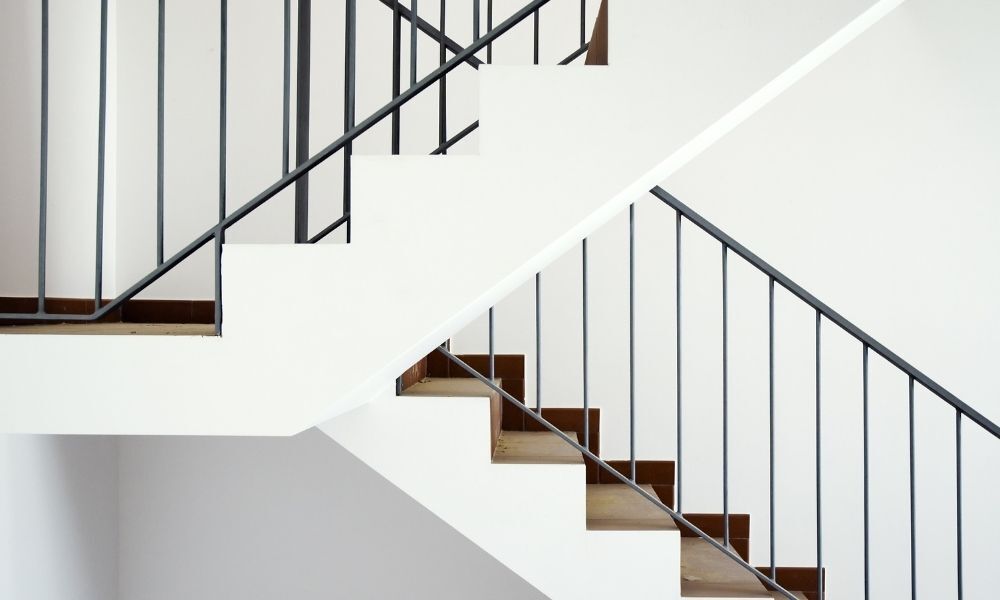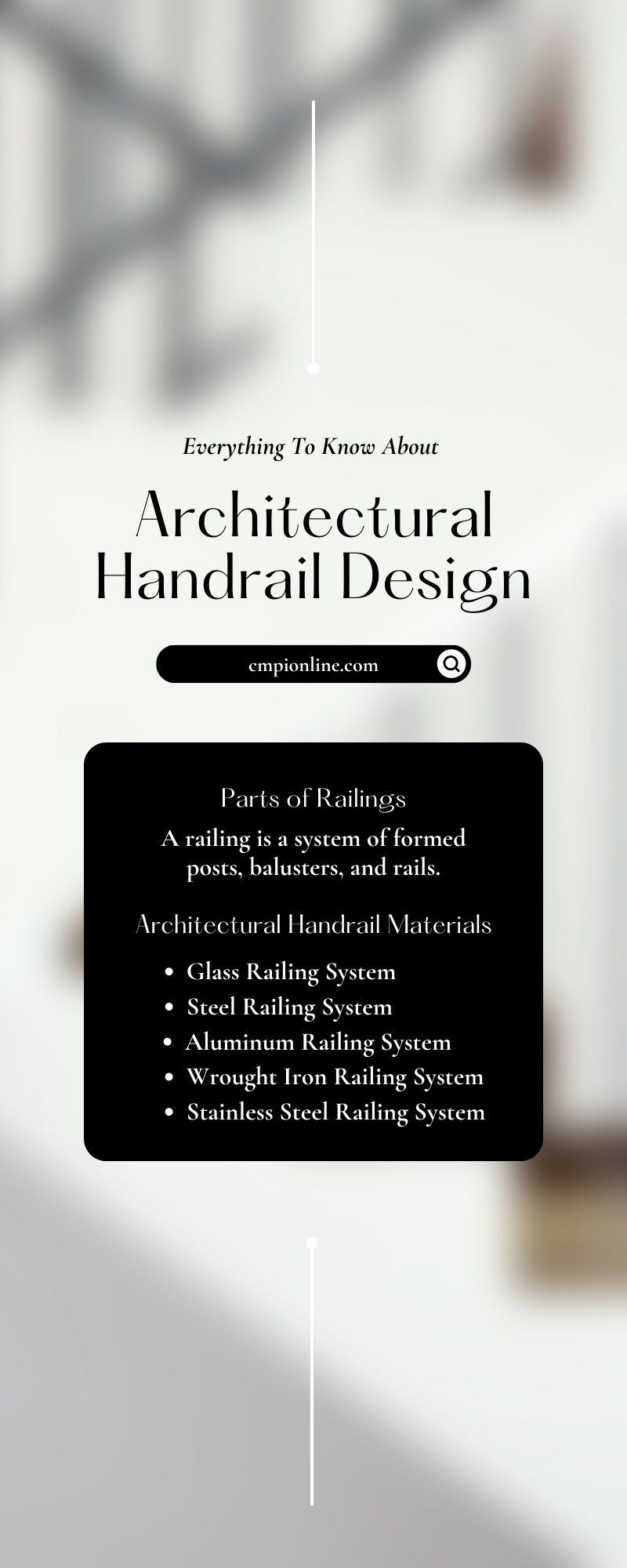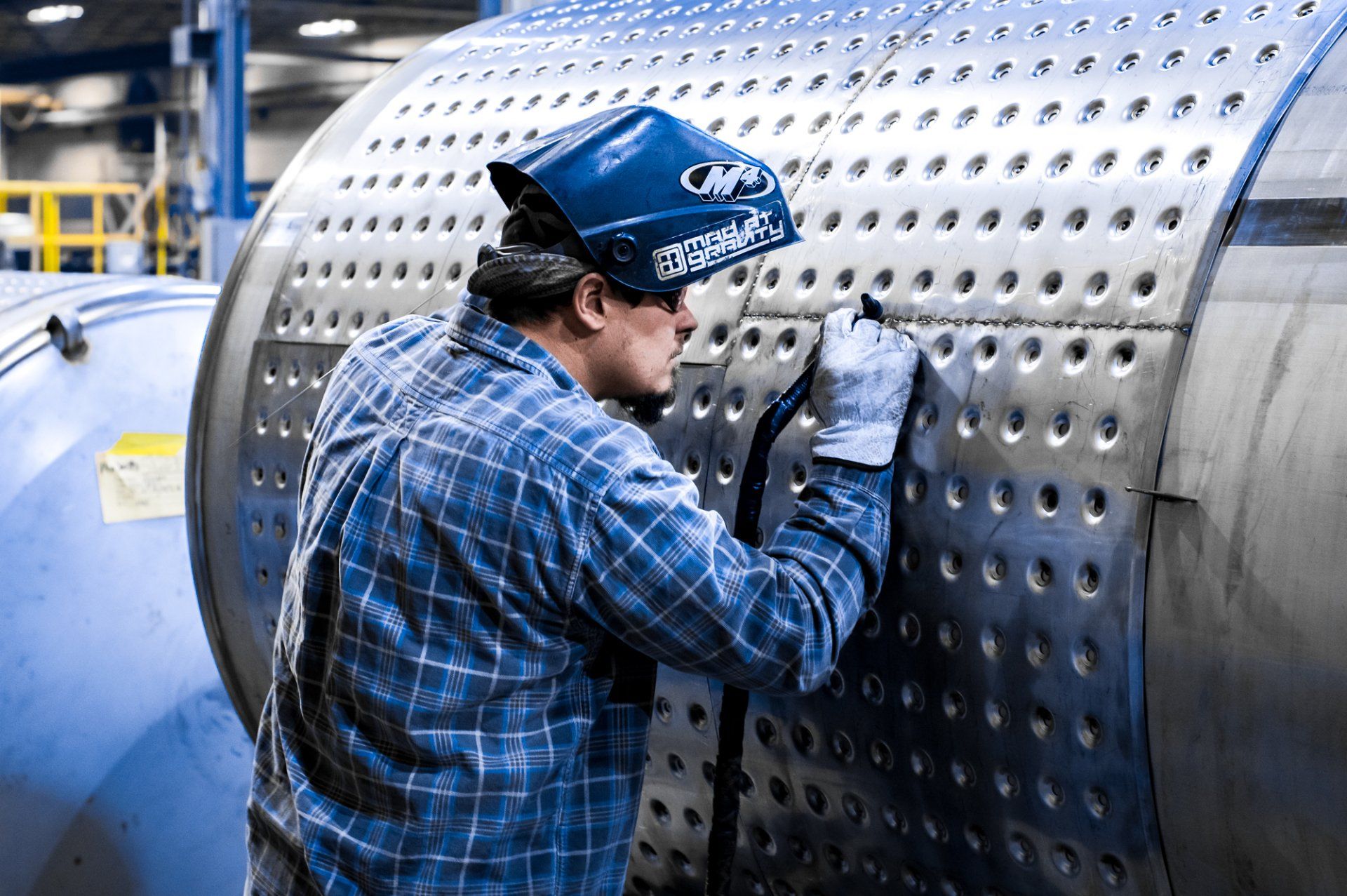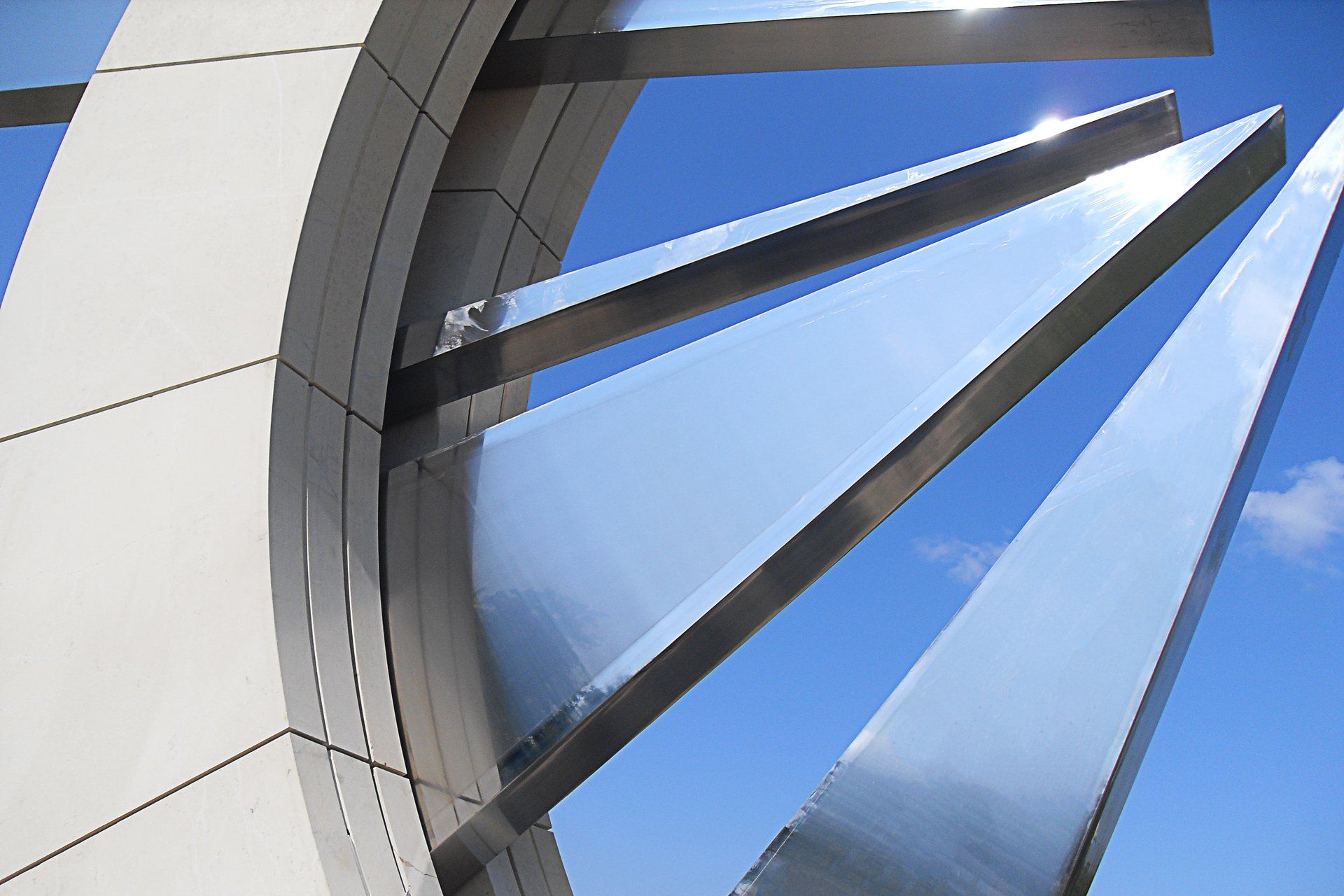Everything To Know About Architectural Handrail Design

We need to give a nod to architectural handrails in modern commercial buildings. Not only have they revolutionized a new way to add design to contemporary buildings, but they’ve helped make these landmarks functional and accessible. As we continue to marvel at this wonder, let’s keep learning by exploring a guide filled with everything to know about architectural handrail design.
What To Know About Architectural Handrails
Architectural handrails have increased awareness of how accessible buildings should be for pedestrians. Aside from being accessible, what work goes into railings? And what else is there to know about architectural handrails?
The Definition of Railings
A railing is a system of formed posts, balusters, and rails. The word “railing” originates from and is often shortened to “rail.” When designing this feature, an architect designs the rails to guide along the edge of corridors, staircases, and other open areas.
In instances where there’s a steep drop along a path, a railing prevents people from falling off the stairs. All in all, we can see that railings include barriers that prevent onlookers from an accidental descent and from climbing over the stairs.
Parts of Railings
Railings help those with mobility issues get around from one area to another. What helps the railings function correctly are the parts used to make the rails.
The Baluster
A baluster is a support used to hold the top railing in place. The baluster is the metal between the railings that often looks like decorative posts, pillars, or columns.
The Post
The post is a vertical piece that supports the entire railing system. For a railing to remain strong, workers place a post to hold the structure in place.
The Rail
The rail is horizontal. This part is the guard or barrier of the handrail; it often sits on posts on the bottom or top of the rail.
The Size of Architectural Handrails
Handrails come with many requirements before an installation can happen. Many designers need to have ADA-compliant designs, which means those with mobility issues can easily grasp the handrail and reach the handrail while walking.
Additionally, the handrail requires inspection by the ICC and must meet strict height requirements. Here’s a brief overview of those requirements.
- All ramps, ramped aisles, steps, and stairways must measure the distance between the ramp slope’s finished surface and stair tread surface.
- All sides of the stairway, steps, and handrails must be uniform. In other words, the steps and handrail need to have the same incline.
Architectural Handrail Materials
Hand railings have become a staple for many businesses and other commercial buildings. Additionally, many are engineered with different materials to help meet a particular aesthetic rather than a certain function. With enough thought and dedication from the right designer, these materials can easily be functional.
Here’s more information on the different architectural handrail materials.
Glass Railing System
Glass is a fragile material, but it gets more robust when appropriately tempered and laminated. Although that process does help, glass is still a material that should only be used to avoid obstructed views. Furthermore, glass railings are famous for open-concept spaces and generally come manufactured as structural or post-supported.
Steel Railing System
The steel railing system is a popular choice for many college campuses, office buildings, and hospitals. Steel works well with stair stringers, which are the housings that sit on either side of stair railings to fix treads and risers. However, steel does rust fast and can be challenging to maintain.
Aluminum Railing System
Aluminum is lighter than steel railings. Additionally, the upkeep is easy, as it won’t rust. However, these railings work better outside as they can help make an entrance appear more appealing. Even though these railings can be used outside, they do scratch and dent easily.
Wrought Iron Railing System
The wrought iron railing system is made with an iron alloy that contains tiny amounts of carbon. Often, wrought iron is found near residential areas to help make a home feel more rustic. The material is versatile and can be used inside or outside a home or commercial building.
However, wrought iron is heavy and takes time to install. Additionally, if wrought iron is installed outdoors and isn’t cared for, it can rust from exposure to weather. This material requires more upkeep, which results in workers painting and recoating the material more often.
Stainless Steel Railing System
Stainless steel railings are the best, as they contain a mix of iron, chromium, and nickel or other metals. The metal is easy to install and simple to clean and maintain. Stainless steel handrails don’t require a ton of maintenance since the coating prevents corrosion.
However, one downside is that the material is expensive, but that doesn’t prevent it from being an excellent choice, especially if your company is looking for stainless steel handrail fabricators. Custom Manufacturing and Polishing Inc promises to make the dream a reality no matter what design you’re imagining.
Additionally, as we explore the guide on everything about architectural handrails, let’s find out the best finishes for stainless steel handrails.
The Chemical Finishes of Stainless Steel Handrails
Also called “agers” or anodized finishes, a chemical finish gives stainless steel a rusted appearance. A worker can chemically age metal over time, then coat it with wax or a clear coat once they’re finished.
The Mechanical Finishes of Stainless Steel Handrails
Industrial companies and those that work in food sanitization often use mechanical finishes. With a mechanical finish, the metal receives a satin-like finish or a bright polished, mirror-like look. However, each finish performs differently in various environments.
For example, a satin-like appearance has more surface area, allowing dirt and other contaminants to settle inside the surface. The bright-polished finish won’t hold any dirt or contaminants, but it will show fingerprints.
The Organic Finishes of Stainless Steel Handrails
Stainless steel handrails also have the option of only receiving coats of wax. The wax is translucent and won’t require any reapplication, unlike paint. However, if you desire to paint your stainless steel handrails, be advised that you must repaint it often once it starts to chip.
When installing a metal rail system, it’s important to note the style you’re searching for, as well as the type of material you’d like to use. Architectural handrails have come a long way. For the most intricate designs and to bring the best ideas to life, reach out to Custom Manufacturing & Polishing, Inc.
At Custom Manufacturing & Polishing, Inc., you can explore various services and options for your future architectural handrails. For more information on how to bring your customization to life, contact us here.






